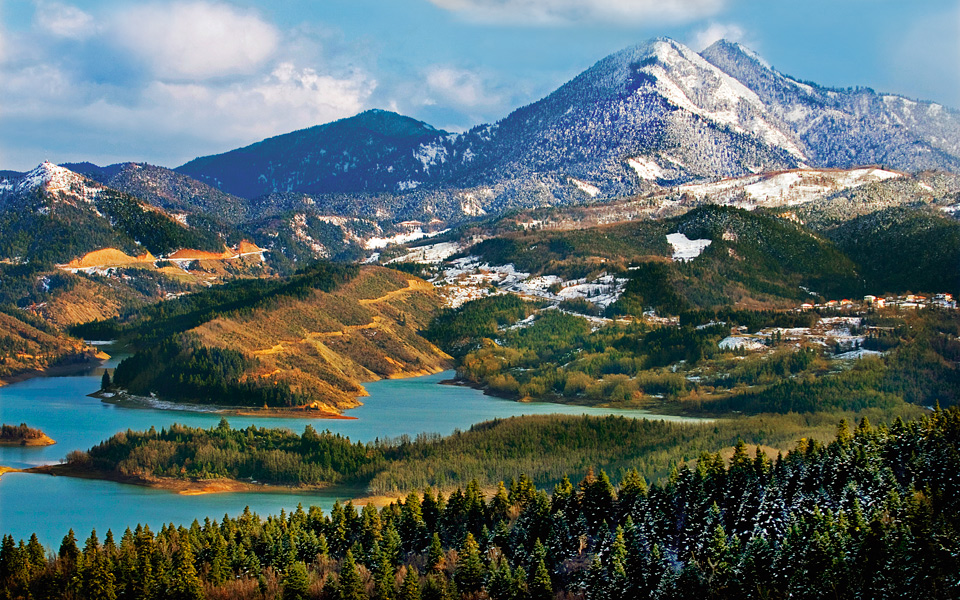Lake Plastira
An artificial lake formed in the early 60s following the construction of a dam, Plastira Lake was named after a Greek military officer and Prime Minister, Nikolaos Plastiras (1883-1953), who hailed from the region and envisioned the project’s development.
Where: Lake Plastira is situated in the heart of mainland Greece, in Thessaly’s Nevropoli plateau, less than an hour away from the provincial city Karditsa.
When: Although most popular between fall and spring, Lake Plastira is an all-year destination. Travelers who do not prefer crowds should avoid heading to the region during long weekends and public holidays.
Why: The location is ideal for walks through forests filled with chestnut trees and firs. There are family paddle-boat rides as well as canoe, kayak and pirogue rides all the way to the dam. It is also a place to become acquainted with archery and for cycling on both dirt and asphalt lakeside tracks.
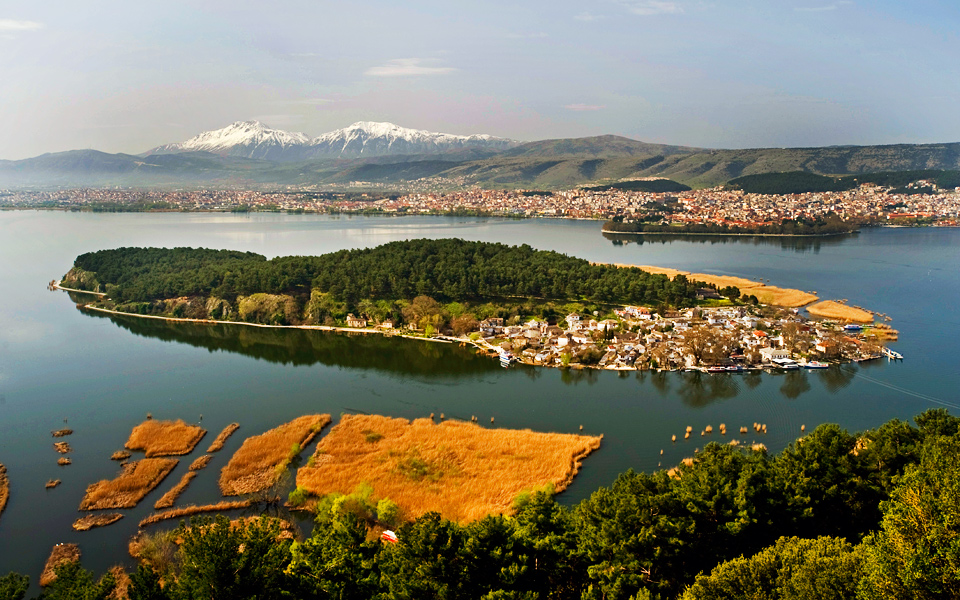
© Clairy Moustafellou
Lake Pamvotida
Up until the ‘50s, Lake Pamvotida belonged to the same ecosystem as Lake Lapsista before it dried out.
Nowadays, despite having suffered some environmental damage as a result of human intervention, Lake Pamvotida remains a jewel of Ioannina and the wider Epirus region.
According to legend, Ali Pasha, the Ottoman Albanian ruler whose territory included most of Epirus, ordered the drowning of a beautiful young lady named Frosyni in the lake after she rejected his sexual advances.
Where: Lake Pamvotida is located in the Epirus prefecture, northwestern Greece, at the foot of Mount Mitsikeli and is widely referred to as the “Ioannina city lake”.
When: Though Lake Pamvotida may be visited throughout the year, fall to spring is probably best.
Why: Lake Pamvotida is ideal for strolling alongside its still waters. Taking a boat to the inhabited and highly picturesque islet within the lake makes for a fascinating experience.
It can be covered on foot in a short amount of time. The tavernas operating on the islet serve unusual recipes, including eel and frog legs.
In addition, the island boasts the Ali Pasha and Revolutionary Period Museum.
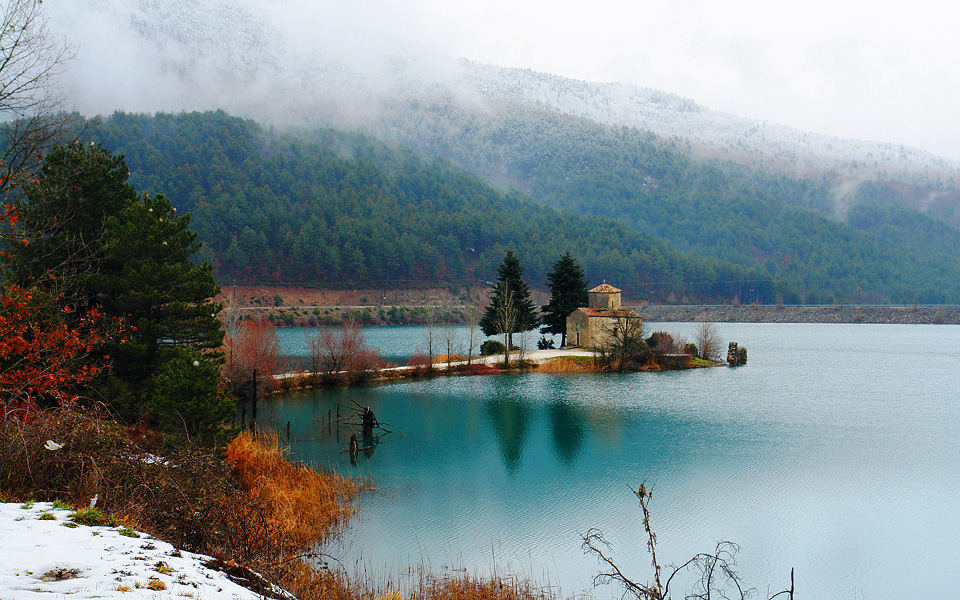
© Dionysis Kouris
Lake Doxa
Lake Doxa is another artificial lake that emerged after the development of a dam, in the 90s. Situated in an idyllic setting amid the Corinthian mountain range, it has become a popular destination for Athenians, as it is in close proximity to the capital.
Where: Lake Doxa is located in the Feneos valley, wedged between the Ziria, Helmos (aka Aroania) and Dourdouvana mountain ranges, a roughly one hour and forty minute drive from Corinth and two and half hours from Athens.
When: The lake is ideal to visit throughout the year.
Why: The trekking, cycling and horse riding opportunities make this a worthwhile place to visit. Lakeside picnics may also be enjoyed here on weekends, weather permitting.
More intrepid visitors willing to brave the cold waters will be tempted to take a dip.
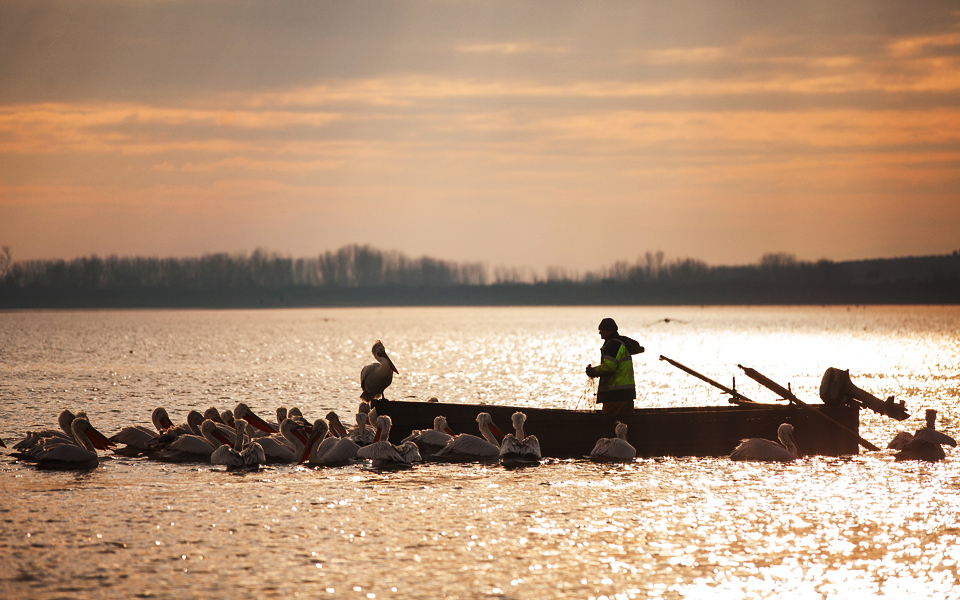
© Dimitris Vlaikos
Lake Kerkini
Also an artificial lake, Lake Kerkini was created as a result of the development of a dam on the Strymon River in 1932.
Lake Kerkini is protected by the Ramsar Convention, an international treaty for the conservation and sustainable use of wetlands.
The protected wetlands at this location have been declared a National Park. The wider region’s impressive landscape includes wild willows, water lilies, fish, birds, wolves, deer and buffalo.
Where: Lake Kerkini is located in northern Greece, close to the borders of Bulgaria and the Former Yugoslav Republic of Macedonia (FYROM), one hour from the Greek provincial city Serres.
When: The best time to visit is from April to June and November to March. Travelers who opt to visit during winter may encounter a frozen lake.
Why: Visiting is worthwhile to observe the many bird species, including great white pelicans, fish eagles and great black cormorants. It is also a great place for canoe and boat rides, cycling, trekking and 4×4 adventures.
Photography excursions are also organized in the area.
For further information, visit the Oikoperiigitis website
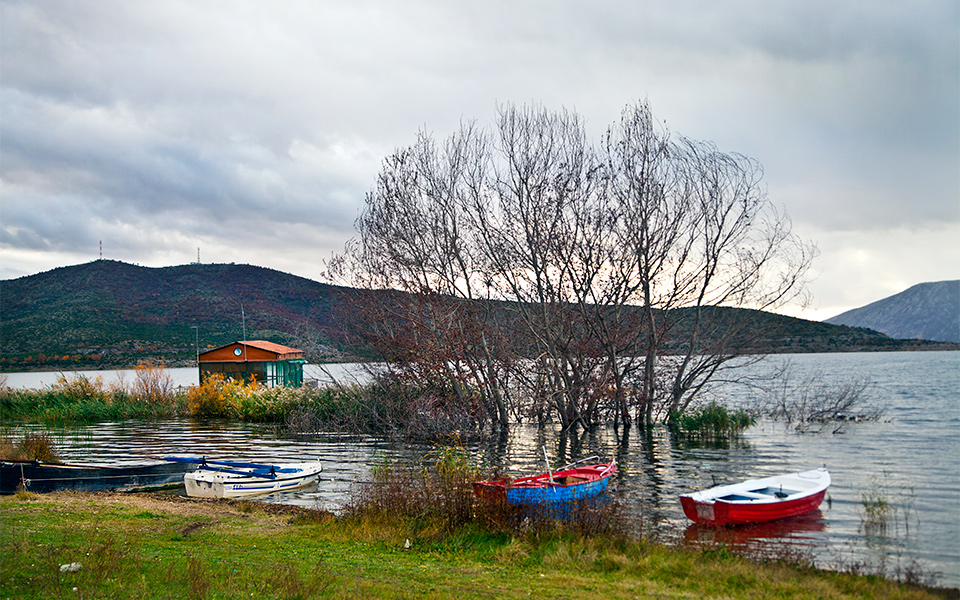
© Clairy Moustafellou
Lake Vegoritida
Lake Vegoritida is part of a four-lake complex in northern Greece. It combines with the Zazari, Himaditida and Petron lakes to make up Lake Eordaia. It once covered 1,000 square kilometers and was 250 meters deep.
Where: The lake is located close to Greece’s border with the Former Yugoslav Republic of Macedonia (FYROM), one hour from the Greek provincial city Florina.
When: Though best in spring, Lake Vegoritida is a beautiful spot to visit at any time of the year.
Why: Windsurfing, canoeing, trekking, even taking a laid-back drive around the lake to gaze out at the scene of fishermen patiently waiting for something to take the bait, are all good reasons to visit this impressively serene lake.

